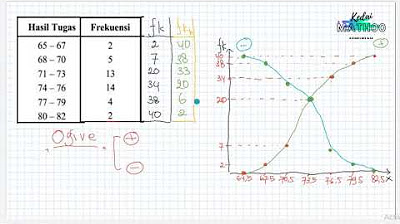A Level English Language (9093) Paper 3: N-Gram Graphs (2022 Past Papers)
Summary
TLDRThis video delves into the concept of anagram graphs, which are instrumental in analyzing word and phrase frequency within a corpus. A corpus, being a structured collection of text, allows us to observe linguistic shifts over time. The video explores how anagram graphs illustrate the evolution of language, including semantic shifts and colloquialisms. It uses examples from past papers to demonstrate changes in word usage, such as the rise of 'inappropriate' over 'unbecoming' and the decline of traditional forms in favor of 'etc.' The video also discusses the impact of digital communication on language simplification and efficiency.
Takeaways
- 📚 An anagram graph is a tool used to analyze the frequency of words or phrases within a corpus, which is a large collection of text.
- 🕰️ The graph serves as a time machine, allowing us to observe changes in language usage and the impact of cultural and social changes over time.
- 📊 The x-axis of an anagram graph represents time, while the y-axis represents the frequency of words as a percentage of their usage.
- 📈 The height of a line or curve on the graph indicates the popularity of a word at a specific time period.
- 📉 The script discusses how the adjective 'Unbecoming' has decreased in usage, while 'inappropriate' has become more prevalent in modern English.
- 🔍 Semantic shift is identified as a factor contributing to the change in usage of certain words, with 'inappropriate' having a broader connotation than 'Unbecoming'.
- 🗣️ 'Inappropriate' is considered more colloquial and neutral, making it more accessible and respectful in everyday language compared to 'Unbecoming'.
- 📉 The graph from 1750 to 2000 shows a decline in traditional forms and a rise in the use of 'Etc', possibly due to simplification and efficiency in digital communication.
- 🔠 The spelling 'ceiling' has become standardized over alternative spellings like 'cielings', aligning with modern pronunciation.
- 📊 The graph indicates a shift from 'is become' to 'has become' in expressing the present perfect tense, reflecting grammatical consistency.
- ⬇️ The term 'incorrigible' has seen a decline in usage, possibly due to its specificity, while 'wayward' remains relevant and versatile in describing behavior.
Q & A
What is an anagram graph?
-An anagram graph is a tool used to examine the frequency of words or phrases within a given corpus. It helps in studying changes in language usage, the rise and fall of certain words or phrases, and the impact of cultural, social, and technological changes on language.
What is a corpus in the context of language analysis?
-A corpus is a large and structured collection of written, spoken, or recorded text. It serves as a body of text from which linguistic information can be extracted for analysis.
How does an anagram graph function as a time machine?
-An anagram graph functions as a time machine by allowing us to observe how certain words have gained or lost popularity over time, how grammatical structures have evolved, and how language has adapted to cultural and social changes throughout different time periods.
What does the x-axis represent in an anagram graph?
-In an anagram graph, the x-axis represents a time period, indicating the progression of years.
What does the y-axis represent in an anagram graph?
-The y-axis in an anagram graph represents the frequency of the words as a percentage, showing how frequently these words appear.
Why has the term 'inappropriate' gained popularity over 'unbecoming'?
-The term 'inappropriate' has gained popularity over 'unbecoming' due to semantic shift, where societal norms and values have evolved, broadening the concept of unacceptable behavior. 'Inappropriate' also has a broader and more flexible connotation and is more colloquially accessible.
What factors have contributed to the decline in the usage of 'these forms' and the rise of 'etc.'?
-The decline in the usage of 'these forms' and the rise of 'etc.' can be attributed to simplification and the greater need for efficiency in conveying messages, especially within the constraints of character limits in digital platforms.
Why has the spelling 'ceiling' become more accepted over alternative spellings?
-The spelling 'ceiling' (with an 'e' before the 'i') has become more accepted because it aligns more closely with the modern pronunciation of the word.
What does the shift from 'is become' to 'has become' indicate about the English language?
-The shift from 'is become' to 'has become' indicates a standardization in the use of the present perfect tense in English, where 'has become' follows the pattern of using the auxiliary verb 'has' followed by the past participle form of the verb.
Why might the term 'wayward' have remained more commonly used than 'incorrigible'?
-The term 'wayward' might have remained more commonly used than 'incorrigible' because it is more versatile and applicable in various contexts, such as describing behavior, actions, or even physical objects, while 'incorrigible' is often used in more specific contexts, like describing someone's character or unchanging negative traits.
Outlines

Esta sección está disponible solo para usuarios con suscripción. Por favor, mejora tu plan para acceder a esta parte.
Mejorar ahoraMindmap

Esta sección está disponible solo para usuarios con suscripción. Por favor, mejora tu plan para acceder a esta parte.
Mejorar ahoraKeywords

Esta sección está disponible solo para usuarios con suscripción. Por favor, mejora tu plan para acceder a esta parte.
Mejorar ahoraHighlights

Esta sección está disponible solo para usuarios con suscripción. Por favor, mejora tu plan para acceder a esta parte.
Mejorar ahoraTranscripts

Esta sección está disponible solo para usuarios con suscripción. Por favor, mejora tu plan para acceder a esta parte.
Mejorar ahora5.0 / 5 (0 votes)






